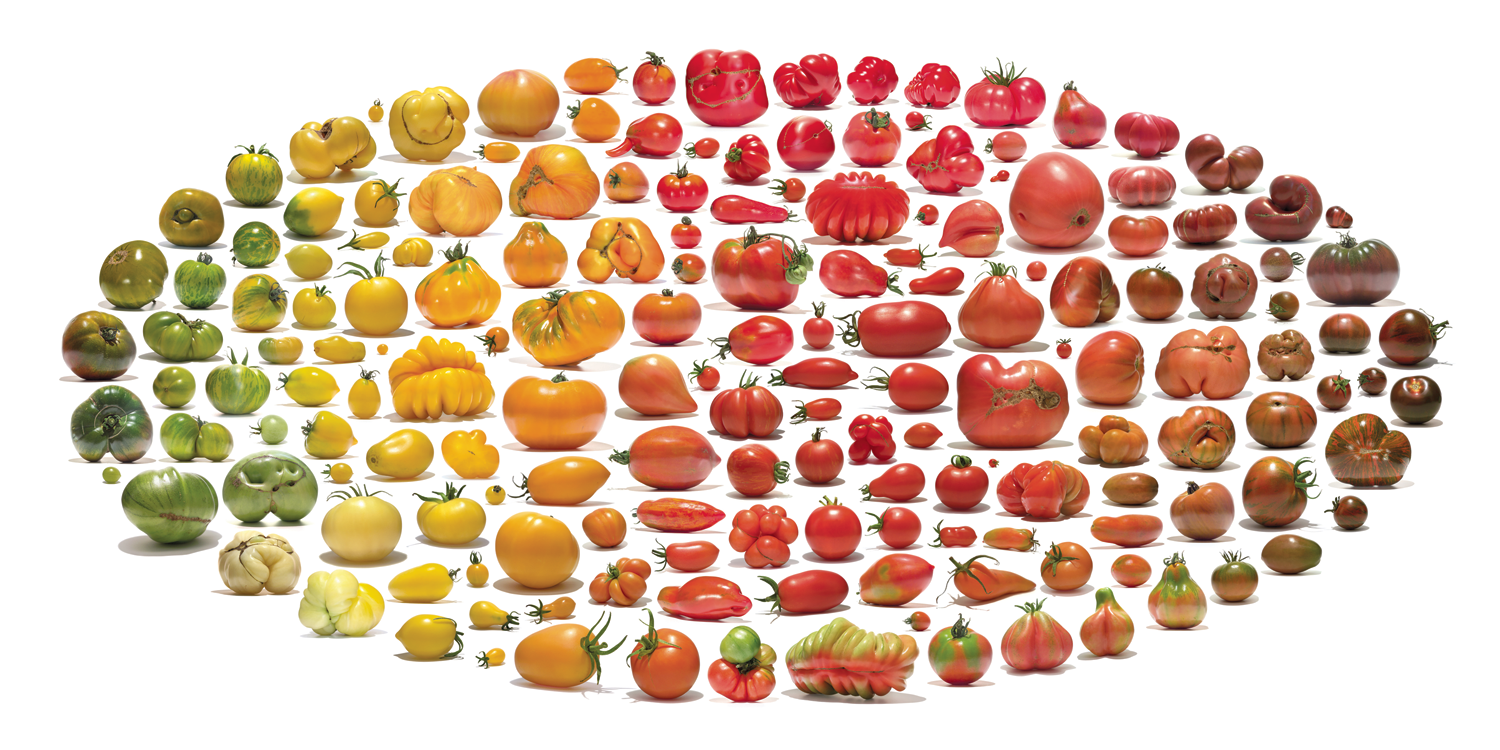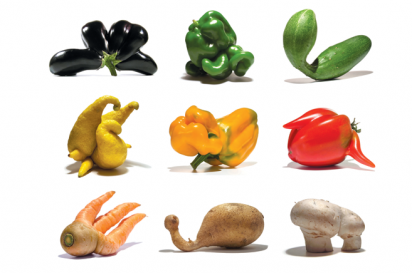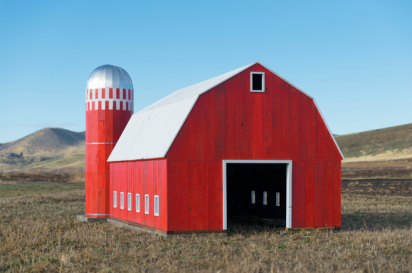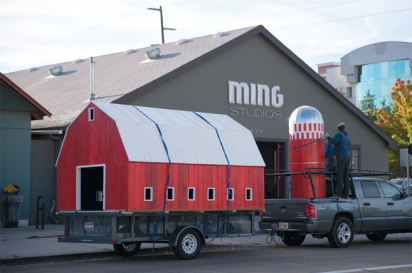Cultivating Art
Visual artist Uli Westphal squeezed his tall, lanky frame onto an old sofa in a back office of MING Studios in downtown Boise. Dressed in a down jacket with his light brown hair pulled back in a ponytail, Westphal carefully described the genesis and inspiration for his photographs, sculptures and installations.
“My biggest influence was the house of my grandparents. They were collectors so their house resembled one of those curiosity cabinets. It was full of masks and artifacts and fossils and art from all over the world.”
Much like curiosity cabinets—if such cabinets were to focus on food and agriculture—Westphal’s art, particularly his “Cultivar” and “Mutatoes” series of photographs, documents the hidden or forgotten diversity that exists in nature. For instance, in his “Cultivar” series dozens of members of the same fruit or vegetable species are grouped together in an oval arrangement to display the wide range of sizes, shapes and colors that exist in today’s world.
His “Cultivar” tomatoes come in nearly every color of the spectrum starting from dark green on the left to yellow to orange to deep red in the middle. As the gaze moves to the right, we see red tomatoes grow subtly darker until certain varieties are almost completely brown, purple and black. Included in this array are round tomatoes one might typically find in the local supermarket, but also those some would consider mutations—misshapen ovals covered with wrinkled and splotchy flesh folded in upon itself.
Westphal’s aptly named “Mutatoes” series of photographs takes this concept in another direction by focusing in on singular, individual fruits and vegetables. A lone yellow pepper, for example, is double-headed like conjoined twins fused together at their dark green stem. Instead of its namesake “pear-shape,” Westphal’s “Mutatoe” variety is green and brown with a rather phallic and elongated neck reminiscent of an ocean geoduck missing its shell, with only a small leaf providing minimal cover.
Westphal first encountered strange-looking fruits and vegetables in Berlin, where he’s based. He said, “One particular market I went to was a Turkish market so immigrants were buying their produce there. And maybe there was a different approach to what looks good and what looks delicious so they were not so selective in how the vegetables looked.” He added, “The vendors were buying B-grade vegetables that were not acceptable to grocery stores and selling them cheaper in the street markets.”
Besides documenting the great diversity of fruits and vegetables that exist in nature, Westphal is also making a parallel statement on the predominance of industrial agriculture and the lack of true variety consumers encounter at major supermarkets in Europe and the United States.
He said, “If you go to a supermarket today, you have this incredible mound of different food. It’s really almost like a fairy tale or Fantasyland. There are so many products you can buy, but it’s based on a very few species.”
For Westphal, one of the purposes of his art it to highlight how industrial agriculture strives to create perfectly uniform fruits and vegetables to satisfy the demands of retailers, and eventually consumers, while discarding outliers, such as “Mutatoes” that are still delicious and nutritious despite their “ugly” appearance.
The costs of this marketing strategy have been documented to have led to staggering amounts of food waste with major economic and environmental consequences. According to the Food and Agricultural Organization of the United Nations, nearly half of all fruits and vegetables produced worldwide are wasted, many due to aesthetic standards. In the United States, a 2016 National Geographic article pointed out that six billion pounds of fruits and vegetables go harvested or unsold every year, often for reasons of appearance.
Although these are serious issues, there’s also a whimsical side to Westphal’s art. As MING Studios’ first international artist in residence in 2014, he created “Cornucopia,” a model red barn and silo based on an image he noticed was frequently found on food packaging in North America, including at local Albertsons markets.
He said, “A lot of my artworks are really just observations. I don’t really manipulate things or create things.” Despite this statement, Westphal built “Cornucopia” out of wood, aluminum and paint on the same scale he noticed the image on food packages. The result is a 12-foot-long barn that stands more than seven feet tall. Its companion silo shoots up nine feet, but is only three feet round at the base.
This model of the iconic family farm image stood in the real fields of Peaceful Belly Farm in Dry Creek until 2017, when the farm moved to the Sunnyslope area near Caldwell. Westphal returned to Boise last fall to help move “Cornucopia” to the farm’s new location at the Vine and Branch Ranch.
Traveling to Sunnyslope is likely not the only opportunity for Idaho residents to see Westphal’s art—he’s married to the sister of Jason Morales, the founder of MING Studios. Because of this relationship, Westphal tends to visit Boise every year so Idahoans will have other chances to catch up on his current and future projects, including visual art representing food supplements, chemically synthesized aromas added to processed foods, and in-vitro meat or engineered tissue produced without animals.
See his art at Uli Westpahl







